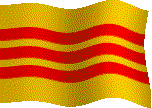 |
South Vietnamese National Police Force
720th Military Police Battalion Reunion Association Vietnam History Project

|
Canh Sat South Vietnamese National Police Force 720th Military Police Battalion Reunion Association Vietnam History Project |
 |
This Page Last Updated 23 April 2013 |
If you would like to contribute any information, documents, personal stories or photographs pertaining to the Canh Sat's that you worked with, please notify the History Project Manager via the above Email Link. |
When the French departed Indochina after their defeat in 1954, they left behind a police vacuum in the country. During their colonial regime, the French had retained total control over the police forces by filling all officer post. Sergeant had been the highest rank to which a Vietnamese policeman could aspire. In 1962 President John F. Kennedy directed the establishment of a committee to formulate ways of assisting foreign police forces. The result was the National Security Agency memorandum 117, which reaffirmed the 1953 decision by President Dwight D. Eisenhower’s administration to conduct this support through civilian agencies rather than through the military. |
|
The U.S. contracted civilian director sent to Vietnam in 1962 to establish the public safety program was Frank Walton, a retired deputy chief of the Los Angeles Police Department. As the U.S. military increased its commitment of troops, Walton increased the numbers of the civilian police advisors. The U.S. Government launched a nationwide recruiting drive for senior ranking police officers to serve as advisors in Vietnam. When the demand continued to grow, the minimum requirements were lowered to accept basic civilian police officers and expanded to include former military police officers and Noncommissioned Officers. More than 1,000 Vietnamese policemen were being killed every year by Communist Forces during the period of the U.S. military buildup. In 1962 there were 70 U.S. law enforcement advisors, by the end of direct U.S. involvement in the war in March 1973 the total was 172. They were all required to depart the country as a result of the Paris Peace Talks. The advisory program also provided the National Police with the majority of its communications equipment, weapons, boats, office equipment, and vehicles. South Vietnamese President President Ngo Dinh Diem issued a decree in June of 1962 integrating all then existing South Vietnamese police agencies into a single National Police Force who answered to the Directorate General of National Police. Each Province (state) had a police chief who was responsible for the police activities within his province, and also supervised the police organizations in the various districts of the province. Long Binh Post was located within the Province of Bien Hoa. Due to the diversity of operations that spread throughout Zone III and IV the MPs of the 720th worked with many of the various National Police branches and province office during their tour in Vietnam. The local Can Sat headquarters for the Long Binh area was situated in Gia Dinh Province with sub-sector compounds located in Bien Hoa and Tu Duc. |
The responsibilities of the South Vietnamese National Police were diversified into seven major branches; |
Judicial Police were the investigative arm. Administrative Police assisted in issuing of passports, visas, national identification cards, radio licenses, price controls, and weapons permits. Rehabilitation Service Police handled matters relating to incarceration of criminal prisoners in civil prisons and detention facilities. Immigration Service Police handled all exit and entry matters and residency permits. Uniformed and Traffic Service Police handled all matters relating to the duties of uniformed municipal police. Order Police who were lightly armed along military lines handled dignitary security and assisted in quelling of riots and civil disturbances, search and security activities. National Police Field Forces (NPFF) were a quasi military group that handled counterinsurgency operations and often worked in conjunction with United States and Army of the Republic of Vietnam (ARVN) troops in counter insurgency clearing operations in and around population areas. The NPFF were dressed, armed, and equipped as a military light infantry unit. |
1966 |
Unidentified Canh Sat with A Company PFC's Sabine and Franklin. |
|
| Unidentified Canh Sat. |
1967 |
Unidentified Canh Sat at Check Point #2. |
|
Unidentified female Canh Sat at Check Point #2. |
|
MP's, Vietnamese National (CS) and Military Police (QC) at the Thu Duc Police Station. |
|
B Company MPs and unidentified Canh Sat searching a GI prisoner at Bien Hoa PMO. |
1968 |
Canh Sat assigned to Operation OVERTAKE with A Company. |
|
Canh Sat Lieutenant assigned to Operation OVERTAKE with A Company. |
|
SP/4 Hardy, A Company and unidentified Canh Sat's. |
|
Unidentified Canh Sat's and Quan Canh. |
|
| 615th Combined Patrol at Bien Hoa, SP/4's Lazenby, Irby, unidentified CS and QC "Hoa." | |
| Unidentified Canh Sat's and SP/4 Donnie Ross, A Company, at Tam Hiep Checkpoint #12. | |
SGT Maury, unidentified Canh Sat, and SP/4 Ellert at 615th MP Company Thu Duc Detachment. |
|
Can Sat working Thu Duc A Company static check point. |
1969 |
| Canh Sat SGT Thahn on Operation Overtake patrol. | |
Cab Sat Cao and unidentified 615th MP. |
|
SGT Fischer (615th) and two unidentified Canh Sat's at Thu Duc. |
1970 |
SP/4 Ed Aldric h, B Company and Vien on motorized patrol, Long Binh Tan. |
1971 |
Unidentified CS and QC at Check Point Golf in DaNang. |
1972 |
| . |
Use Your Browser Button To Return |